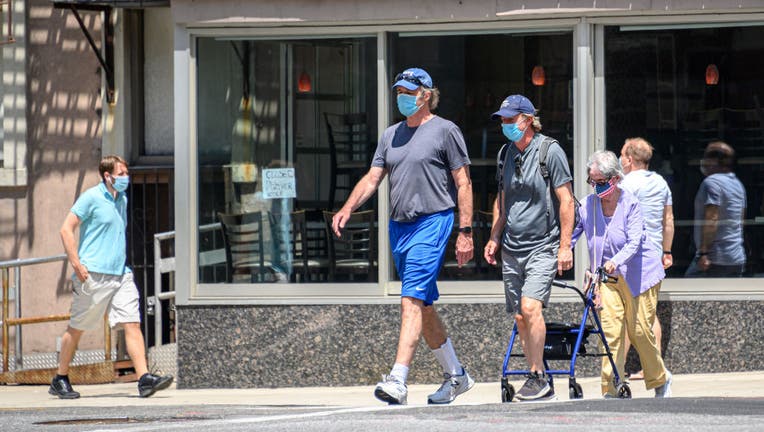Taller people face higher risk of catching COVID-19, survey says

FILE - People wear protective face masks on the Upper West Side as the city continues Phase 4 of re-opening following restrictions imposed to slow the spread of coronavirus on July 28, 2020 in New York City. The fourth phase allows outdoor arts and e (Photo by Noam Galai/Getty Images)
People over six feet tall are more than twice as likely to be diagnosed with the coronavirus, the results of a new survey reveal.
The global team of researchers, including experts from the University of Manchester and Open University, surveyed 2,000 people in the country, as well as the U.S., to determine whether their personal attributes, work and living practices might play a role in transmission, The Telegraph reported.
IS IT SAFE TO WEAR A CORONAVIRUS FACE MASK WHILE EXERCISING?
The results found that taller people are at a higher risk, which researchers say suggests that the contagion is spreading through the air — because height would not be a factor if the virus was only contractible through droplets, according to the report.
“The results of this survey in terms of associations between height and diagnosis suggest downward droplet transmission is not the only transmission mechanism and aerosol transmission is possible,” Professor Evan Kontopantelis, of the University of Manchester, told the outlet.
“This has been suggested by other studies, but our method of confirmation is novel,” he added.
“Though social distancing is still important because transmission by droplets is still likely to occur, it does suggest that mask-wearing may be just as — if not more — effective in prevention. But also, air purification in interior spaces should be further explored.”
CORONAVIRUS INFECTS PET CAT IN ENGLAND: OFFICIALS
Droplets are larger than aerosols and are thought to travel relatively short distances and plummet from the air, according to the report. But aerosols, which can build up in poorly ventilated areas, are carried by air currents.
The study also found that using a shared kitchen or accommodation played a large role — especially in the U.S., where those circumstances made the chances of contracting the bug 3.5 times as high.
In the U.K., chances were 1.7 times higher.

